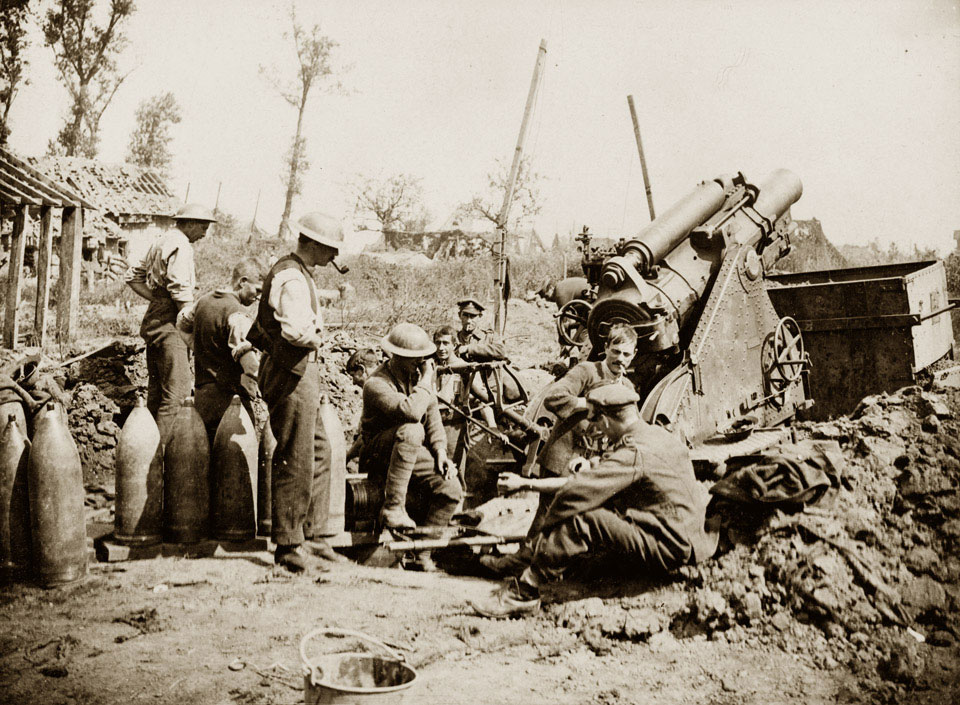
Royal Garrison Artillary Battery of the British Army. Imperial War Museum.
World War I, also known as the Great War, was a global conflict that lasted from 1914 to 1918. It involved many of the world’s major powers divided into two opposing alliances: the Allies (comprised primarily of France, the United Kingdom, Russia, and later joined by the United States) and the Central Powers (led by Germany, Austria-Hungary, and the Ottoman Empire).
The Somme is a river in northern France, and the Battle of the Somme was one of the most significant and devastating battles of World War I. It took place between July 1 and November 18, 1916, in the region known as the Somme Valley.
Key aspects of the Battle of the Somme and its relation to World War I:
- Context: The Battle of the Somme was part of a larger offensive by the Allies to break the stalemate on the Western Front. The Western Front was a series of trenches stretching from the North Sea to the Swiss border, where both sides were locked in a bloody and entrenched war of attrition.
- British Offensive: The Battle of the Somme was primarily launched by the British Expeditionary Force, with the support of French troops. The British forces aimed to relieve pressure on the French, who were heavily engaged in the Battle of Verdun, another major conflict on the Western Front.
- Trench Warfare and New Technology: The battle is often associated with the horrors of trench warfare. Both sides had constructed elaborate systems of trenches, barbed wire, and defensive fortifications. The British used new military technology, including tanks, which were introduced for the first time on the battlefield.
- Casualties: The Battle of the Somme resulted in massive casualties. On the first day alone, July 1, 1916, the British Army suffered nearly 60,000 casualties, making it the bloodiest day in the history of the British military. The battle lasted for months, and the total number of casualties, including dead, wounded, and missing, reached over one million.
- Limited Gains: Despite the immense loss of life, the gains made by the Allied forces during the Battle of the Somme were relatively small and did not lead to a breakthrough of the German lines. The battle ended in a strategic stalemate.
- Impact on Warfare: The Battle of the Somme had a profound impact on military tactics and strategy. It exposed the limitations of frontal infantry assaults against well-entrenched positions and highlighted the need for better coordination between infantry, artillery, and other forces.
- Symbolism and Remembrance: The Battle of the Somme became a symbol of the senseless loss of life and the horrors of war. It is remembered as a turning point in the public perception of the war and contributed to growing anti-war sentiments in many countries.
- Legacy: The Somme remains a place of historical significance and remembrance. Today, numerous memorials, cemeteries, and museums in the region commemorate the soldiers who fought and died during the battle.
The Battle of the Somme, along with other major battles of World War I, had a profound impact on the course of history. It contributed to the eventual defeat of the Central Powers and the redrawing of the political map of Europe. The war’s devastating consequences and the failure of the Treaty of Versailles to address underlying issues also set the stage for future conflicts, including World War II.
